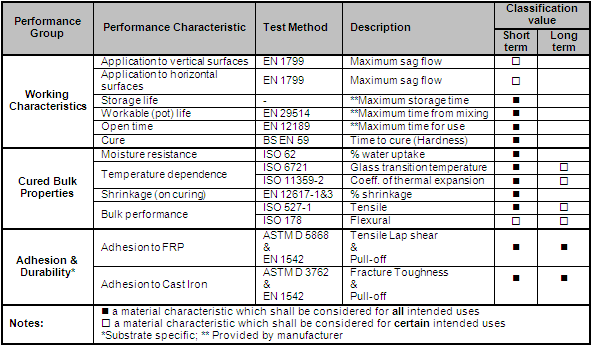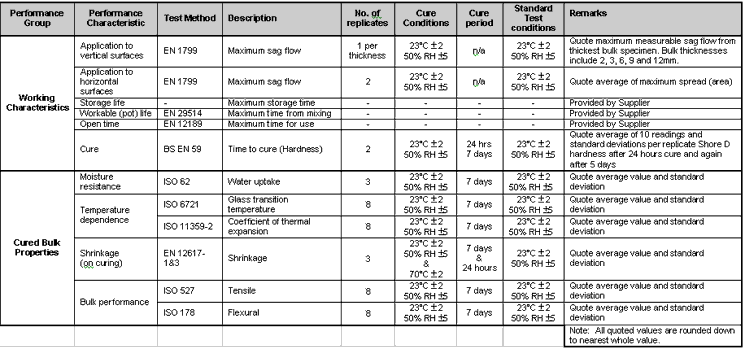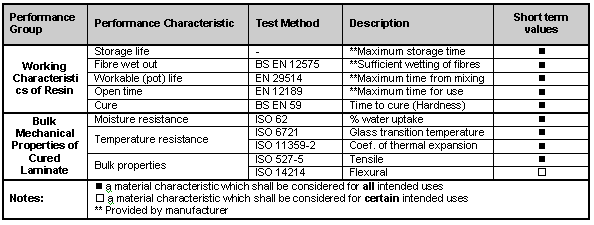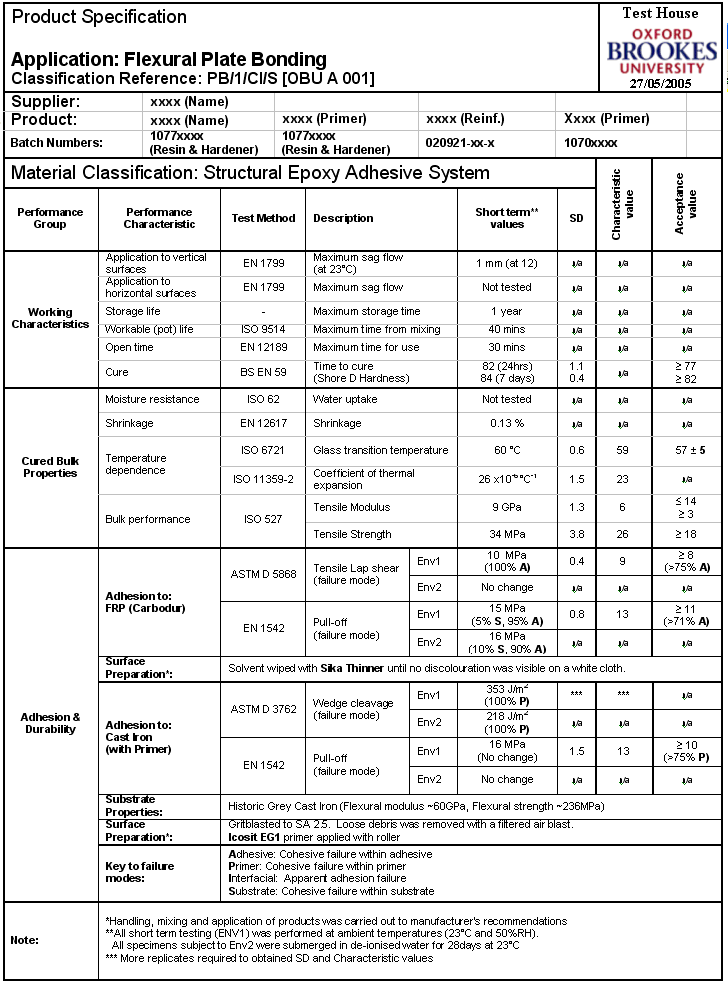

Classification
Classification schemes have been developed for individual components of the reinforcing materials system and include primers, adhesives, laminating resins, fibre pre-forms and pre-formed FRP composites. An example can be found here.
Each document provides data for:
• a preliminary materials selection
in the design process
• characteristic values for detailed design
• selection of appropriate QC test methods
• defining acceptance criteria.
The composite reinforcing systems currently included are:
• prefabricated composite plates externally bonded or near surface mounted (NSM) bars, e.g. cured pre-impregnated laminates or pultrusions.
• in situ laminations e.g. resin-wrap, resin-infusion.
The future intention is to include material systems classified for loading types other than flexure (e.g. compression, shear, fatigue and impact) as, and when, suitable test methods become available. There is scope, however, within the given schemes to include extreme environmental conditions in certain applications.
The main focus of the classification methodology is not to be prescriptive, by setting minimum performance requirements, because most design solutions are unique. Thus short-term values are determined from current standard test methods, from which characteristic values for design and acceptance values for on-site QC testing can be derived. An interactive document explaining requirements of the classification testing can be found here.
Classification of adhesive materials
Three fundamental aspects for the successful application of adhesive materials used for strengthening purposes include:
• working characteristics
• mechanical performance and bulk property
behaviour
(including thermal behaviour)
• adhesion and durability of the material
system.
The working characteristics of an adhesive are critical to successful on-site application, and include storage life, usable life and curing requirements. The mechanical properties of the adhesive, or resin, currently form part of the design requirement and their importance is self-evident. The test methods for defining the performance requirements for the classification of adhesives and resins for flexural strengthening are given below:

The short term testing requirements for working characteristics and cured bulk properties are given here:

The third aspect, adhesion, represents the least well understood of the requirements and yet is crucial for ensuring bond integrity and long-term durability. Testing requirements for adhesion and durability are given here:

Classification of composite materials
Composite materials may be considered either as a prefabricated component or as an in situ site-laminated plate. Prefabricated components may include standard forms such as pultruded rods, bars, beams and plates, or, bespoke beams, shells and profiles. Externally bonded or near-surface mounted reinforcement for flexural strengthening typically involves pultruded plates, or rods, that can be used either in an unstressed or prestressed state.
The Classification Scheme for composite materials has been devised for applications involving flexural strengthening. The performance requirements and test methods associated with two separate aspects are then considered:
• Working characteristics of
laminating resins
• Mechanical and physical properties of cured
composite materials.
Adhesion to the composite materials is assessed under the adhesive, or resin, classification. The test methods for defining the performance requirements for the classification of composite reinforcement for flexural strengthening are given below:

Classification documentation
An example of the completed classification scheme for
a structural epoxy adhesive system used for a flexural plate bonding application
is shown below. The various elements of the scheme and how they should be
interpreted are accessed by scrolling over different parts of the table (this
feature is currently still under development). A blank template can be downloaded
for your own use here.
A printer-friendly version of the following example is
available from here.

Website designed and maintained by PC Net Services. This page last updated: Sept 19th, 2011